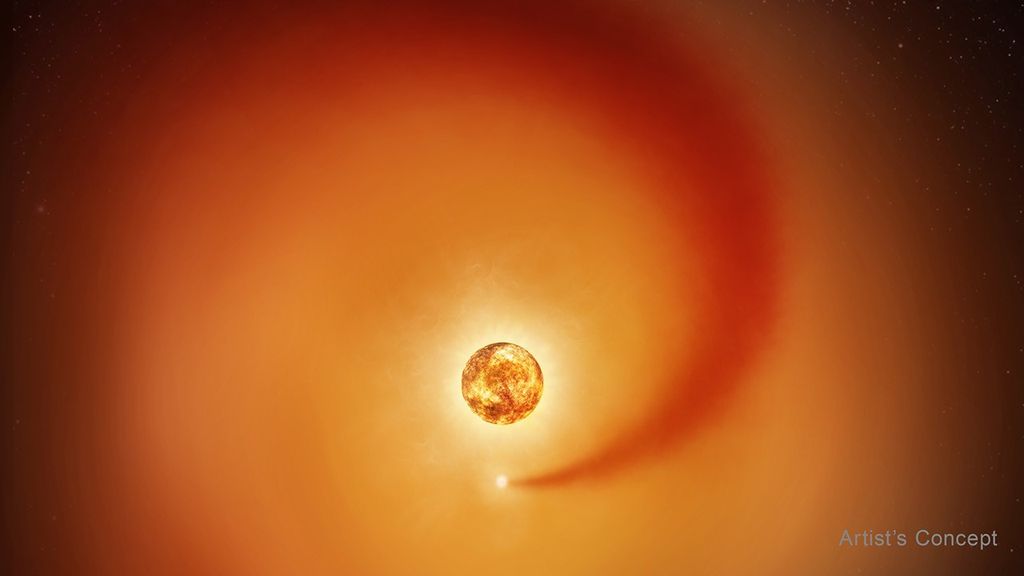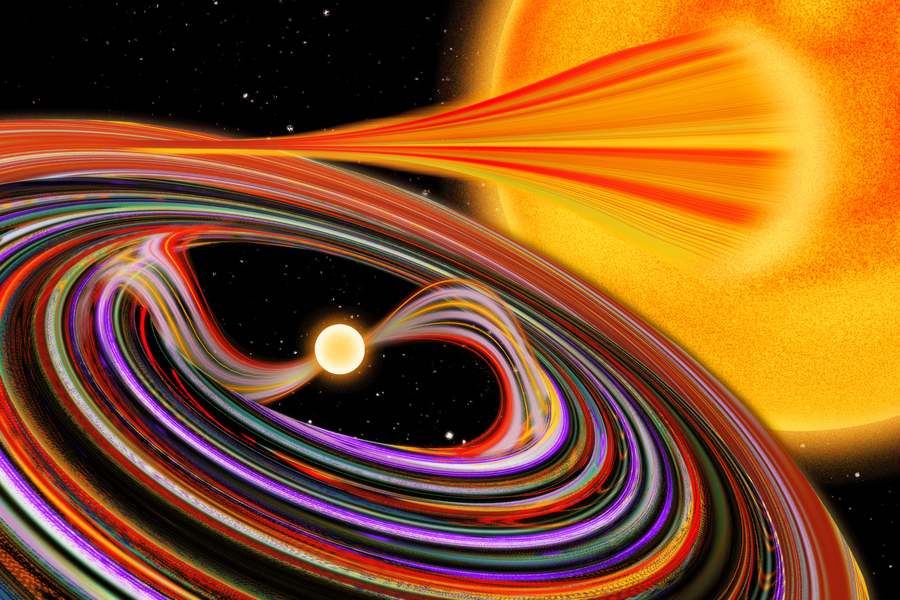1 min read
Stellar Motions of Halo Stars in Milky Way

This illustration shows the disk of our Milky Way galaxy, surrounded by a faint, extended halo of old stars. Astronomers using the Hubble Space Telescope to observe the nearby Andromeda galaxy serendipitously identified a dozen foreground stars in the Milky Way halo. They measured the first sideways motions (represented by the arrows) for such distant halo stars. The motions indicate the possible presence of a shell in the halo, which may have formed from the accretion of a dwarf galaxy. This observation supports the view that the Milky Way has undergone continuing growth and evolution over its lifetime by consuming smaller galaxies.
About the Data
- Data DescriptionData DescriptionProposal: A description of the observations, their scientific justification, and the links to the data available in the science archive.
Science Team: The astronomers who planned the observations and analyzed the data. "PI" refers to the Principal Investigator. - InstrumentInstrumentThe science instrument used to produce the data.HST>ACS/WFC and HST>WFC3/UVIS
- Exposure DatesExposure DatesThe date(s) that the telescope made its observations and the total exposure time.December 2002 - January 2003, August 2004 - January 2005, January - August 2010
- FiltersFiltersThe camera filters that were used in the science observations.F606W (V) and F814W (I)
- Object NameObject NameA name or catalog number that astronomers use to identify an astronomical object.Milky Way Halo
- Object DescriptionObject DescriptionThe type of astronomical object.Milky Way Shell Structure
- Release DateFebruary 21, 2013
- Science ReleaseStellar Motions in Outer Halo Shed New Light on Milky Way Evolution
- Credit
Share
Details
Last Updated
Aug 17, 2025
Contact
Media
Claire Andreoli
NASA’s Goddard Space Flight Center
Greenbelt, Maryland
claire.andreoli@nasa.gov
































